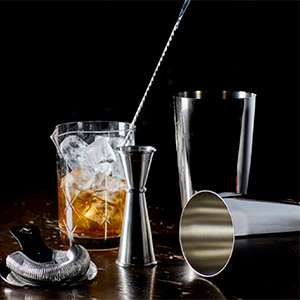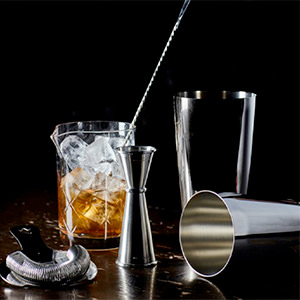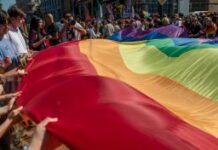St. Sukie de la Croix didn’t set out to be one of the prolific custodians of gay bar history in Chicago. “I was listening to these two old guys in a bar, and they were wearing this old leather and they were arguing about the exact address of some old bar that wasn’t there anymore,” he remembers. “I went to my publisher and said, ‘Can I do a column?’” That was 1997. For six years, the British-born de la Croix published weekly 1,000-word columns documenting the Windy City’s gay nightlife scene for local paper. A book, “Chicago Whispers: A History of LGBT Chicago Before Stonewall,” followed in 2012.
Turning barflies’ memories of the city’s shuttered gay and lesbian bars into publishable reports posed challenges, and de la Croix often found himself trying to reconcile conflicting contributions. And when the self-deputized historian found himself too close to a source, things could get complicated. “I had to be careful with some of the things I actually put in the paper,” recalls de la Croix. “I had some great stories I couldn’t print. When you get picked up by a very famous mob leader in Chicago, and you give him a blowjob in the back of his car… I mean, it hurt me not to put the story in the paper.”
The mob may have relinquished Chicago’s gay and lesbian bars from the vise-like grip it established on those businesses (and their New York City counterparts, too) during Prohibition. But archiving the history of the LGBTQ+ community’s beloved third places across the country hasn’t gotten any easier since de la Croix began his work some 30 years ago. Patrons’ recollections have gotten foggier; photos and fliers have faded; funds for preservation work are perennially tight. That was all true before the coronavirus pandemic put an unheard-of strain on the country’s hospitality industry, and believe it or not, that didn’t make collecting and preserving these vital American drinking histories any easier for the career scholars, authors, filmmakers, and hobbyists across the country trying to do so. “It’s been a strange time to try to do this research,” says Lucas Hilderbrand, a professor of film and media studies at the University of California-Irvine who is working on a book about gay bar history.
For Pride Month, VinePair interviewed eight gay and lesbian bar archivers around the country about the challenges and urgency they’re currently facing in documenting America’s gay and lesbian bars while they still can. Their work spans media, discipline, and geography, but each shares the common goal of collecting the memories and materials that animated American LGBTQ+ nightlife in its heyday. As one put it, these bygone bars are “phantoms of the past.” Here’s a look at the effort to immortalize them — and the challenges archivists face along the way.
“It’s like those books have been burned”
The first thing you must understand about the effort is that it’s urgent. “I don’t know if there’s going to be, 30 years from now, a category that we call gay bar or the lesbian bar,” muses Frank Perez, author and co-founder and president of the LGBT+ Archives Project of Louisiana. If the past 30 years are any indication, he has reason to worry. After a brief uptick in the late ‘70s and early ‘80s, the total number of gay and lesbian bars in the United States crested around 2,000 locations, according to research published by Oberlin associate professor of sociology Greggor Mattson based on listings in the Damron Guides, a prominent LGBTQ+ nightlife guidebook series published annually throughout the back half of the 20th century. This data is incomplete, as Mattson himself notes, but it paints a picture directionally, and that direction is unmistakably downward. The sociologist’s figures indicate the country has lost 45 percent of gay and lesbian watering holes since 1977 — and those were only the locations well established enough to be indexed in the first place.
”There has indeed been a decline, the decline has been accelerating,” Mattson, who operates the Twitter handle @WhoNeedsGayBars, tells VinePair. According to his audit, the total number of listings tumbled over 14 percent between 2017 and 2019 alone. The causes for each closure vary, but there are common themes. “They’re competing with the internet, they’re competing with gentrification, they’re competing with assimilation, they’re competing with [the fallout from] Covid,” says Erica Rose, a filmmaker and co-founder of the Lesbian Bar Project, a documentary film effort. When the pandemic hit, Rose and Elina Street put together a short video to draw attention and raise funds for America’s few remaining lesbian bars. (The exact number of lesbian bars still standing is also a source of debate, but it’s low. LBP now says there are 21 still operating throughout the U.S. By contrast, Mattson found 162 listed in 1977.)
[embedded content]
The pandemic has only exacerbated these factors, putting brutal financial pressure on already beleaguered gay and lesbian bars across the country. Even the most famous watering holes are not exempt: In May 2021, The New York Times reported that the iconic Stonewall Inn itself was struggling with mounting bills after a year-plus of pandemic. “If Stonewall, the most iconic L.G.B.T.Q. bar in the world, is facing an uncertain future, then think about everybody else,” its co-owner said.
Whenever a gay or lesbian bar’s uncertain future turns to a certain demise, the clock starts ticking to capture information about it before it disappears into the ether. “There’s sort of a rush to preserve things,” says Mattson, and these ad-hoc efforts are often pioneered not by trained historians but by patrons hustling to immortalize memories of a place they loved. “Sometimes a Facebook group gets set up, and then people run around scanning their photos or just taking photos of their [old] photos with their phones.” These ad-hoc social media efforts can be troves, but only for those professional archivists who know about them — or are on social media in the first place. “Most regional historical societies are underfunded and understaffed, so unless they happen to have some LGBT person on their staff who’s a member of these Facebook groups, I don’t know that these things make it into the formal record,” Mattson says.
Relying solely on digital platforms to share these memories and materials puts them at risk: A group’s administrator could suddenly delete it, or the platform might rejigger its settings, rendering it inaccessible. “You’re dependent upon a corporate entity whose job it is to make money for shareholders,” he says, pointing to Yahoo’s abrupt 2009 obliteration of GeoCities — a major early-aughts repository of LBGTQ+ content and community — as a cautionary tale. (Incidentally, the search portal was also behind the controversial 2018 purge of Tumblr’s NSFW content, which was criticized for driving off queer bloggers and artists using the platform.)
Still, a digital outpouring is better than nothing. For gay and lesbian bars that closed in the distant, Facebook-free past, no such nostalgia flurry is forthcoming. If the shutdowns aren’t documented at the time, either by social or traditional media (more on that in a moment) archivists must mine the memories of patrons who were actually there. And given that gay and lesbian bars were at their statistical height four decades ago, those patrons are, by default, getting on in years.
Dr. Marie Cartier, a queer studies lecturer at California State University-Northridge and UC-Irvine, estimates that of the 102 sources she interviewed for her seminal 2013 book on lesbian bar history, “Baby, You Are My Religion,” at least a third have since died or been afflicted with age-related declines in cognition. “For the 30 or so who have passed, or have dementia or other illnesses and wouldn’t be able to be interviewed [anymore], it’s like those books have been burned,” she says.
“How do we find people?”
Between fading memories, patrons passing away, and the ongoing threat of closure, capturing stories from America’s gay and lesbian bars is tedious, detail-oriented work. “The biggest obstacle is getting the information about the bars, getting the interactions, getting people to say, ‘Yeah, I lived in Des Moines, Iowa in 1968 and there was this bar there, and here’s the information,’” says Art Smith, the amateur archivist behind GayBarchives.com, a gay and lesbian bar logo indexing project. During the pandemic, he estimates he spent 10 to 12 hours a day trying to track down original graphics and signage; to date, he’s indexed some 1,300 logos of bars from 49 states.
This gets at another challenge: In the absence of testimony from drinkers who were actually there, it’s not always easy for archivists to figure out where “there” was on a map. “A lot of the [gay and lesbian bars] that Damron listed … those cities have grown and developed since then,” agrees Dr. Amanda Regan, a co-project director of Mapping The Gay Guides, a project to digitize every published edition of Damron’s Address Books.
More often, the people who drank at old gay and lesbian bars move, making it that much harder to collect their oral histories. This is especially true for queer of color communities that formed on what were once the fringes of a metropolitan area but have since been absorbed and gentrified. “These are communities that have been so obscured or marginalized from record,” says Stacy Macias, Ph.D., an assistant professor at California State University-Long Beach’s department of Women Gender and Sexuality Studies, whose work has explored the history of bygone lesbian nightlife in greater Los Angeles’s “east of east” communities. “The archives are living, but they’re not in any form you can walk into, like a library.” Particularly when said library has been scattered to the wind, displaced by gentrification or drawn elsewhere by jobs or family. Once former patrons move on, tracking them down becomes a challenge in itself, says Macias. “How do we find these people? It’s often through personal connection, doing research based on finding someone randomly from a Facebook photo. … The methods have to be really creative.”
Some archivers, like de la Croix and Smith, lean heavily on their social media audiences to track down one-time patrons of this or that gay or lesbian bar. But while digital platforms can be powerful communication tools, they’re not without shortfalls. There are concerns around security and stability, as Mattson noted. And for archivists whose work relies on forging personal connections with sources to coax detail-rich personal memories of parties past, “social media is just not an adequate substitute for what you get in-person,” says Macias.
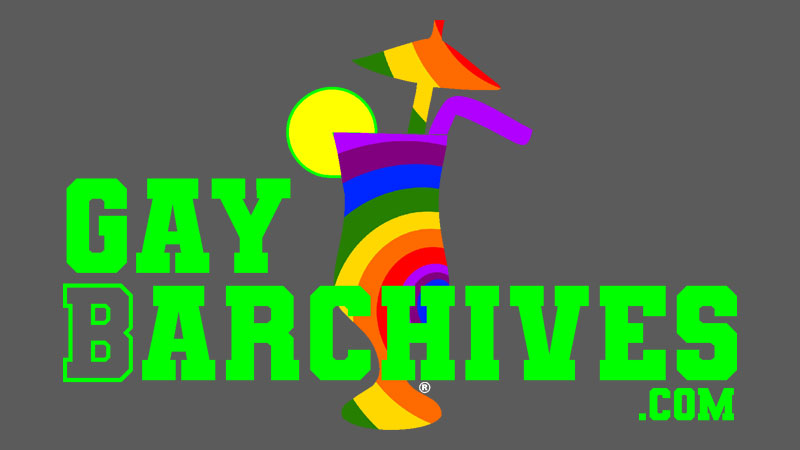
Contemporary media are limited, and mostly offline
Archivists who focus their efforts on written rather than oral history face a different issue: a winding, incomplete, and often analog paper trail. The availability of contemporary media about gay and lesbian nightlife is hit or miss. “The primary place these bars were advertised and that these scenes were documented was in the gay press, and many of those were local and were often very short-lived,” says Hilderbrand. Those periodicals that managed to publish regularly still struggled to adapt to the online age like the bars that often advertised in their pages. “We’re talking about years when people were printing in underground publications that may in some cases [have] only lasted a year or two, and certainly were never scanned or archived online,” says Smith, who himself ran a gay nightlife publication in Atlanta for a few years in the ‘80s. “That’s been a huge challenge.”
This is even truer for richer, more modern forms of media like video. “We had to build a world through archival” footage, says Rose of the Lesbian Bar Project. “A lot of these bars weren’t photographed, they weren’t documented” except by their patrons, so the pair relied heavily on what stills they were able to source from the crowd. The two tell me that they’re aware of no centralized archive for gay and lesbian bar video footage, and that relevant clips were scarce in the databases of major archiving houses. “We had a lot of community support,” adds Street.
To conduct research for his upcoming book, Hilderbrand has relied on the University of Southern California’s ONE National Gay & Lesbian Archives, the largest repository of LBGTQ+ materials in the world, as well as visits to smaller, regional archiving projects and historical societies across the country. But the pandemic forced him to pause those visits, and much of the archived content isn’t online. “The vast majority of material is still on paper in an archive and those have been closed to the public,” he says.
Digital access to the physical media that has been preserved is a widespread obstacle, and one that Dr. Regan, along with her MGG co-founder Dr. Eric Gonzaba and their research team, are working to partially solve. The project’s goal is to scrape the information from each physical Damron volume to populate an easy-to-use national database of gay and lesbian bars from years past. The portal currently includes some 34,000 entries pulled from Damron guides published between 1965 and 1981. Users can sort the bars from location and years of operation to type of business and “amenities” (a shorthand that the guides’ late, prolific author, Bob Damron, used to describe what potential patrons could expect to encounter there). In April 2021, MGG received a three-year grant from the National Endowment for the Humanities to archive another 100,000 gay and lesbian bar locations listed in Address Books published from 1981 to 2000.
Still, even for MGG, accessing the physical materials will be a challenge: The only full collection of Damron guides in existence is housed at ONE’s archives. “A year and a half ago we were like, ‘Oh, we’ll just fly out to USC and spend a couple days in the archives, making scans [but that’s] no longer possible,” says Regan, the project’s digital lead. Instead, MGG will collaborate with ONE and a team at the University of Washington to digitize the guides there now that the NEH funding has kicked in.
Of course, securing and digitizing the Damron guides doesn’t make the information they contain infallible. “They are the longest-running, but they’re shaped by Damron’s biases, and he’s a white guy from San Francisco,” says Regan. For example, there are very few locations in Damron’s early guides demarcated for women. “This could be because there were not very many lesbian bars, but more likely it is because that’s sort of a blind spot for him. … You also sort of see this in the way that he talks about African-American bars,” she adds.
Such is the double-edged sword of doing history by available media — it sheds light on some aspects of the scene while obscuring others through omission. And when the media in question is less prominent than the prolific Damron guides, it’s often absent from archives entirely. “There’s overwhelming documentation of white gay and lesbian bars, but there’s very little archival documentation of Black and Latinx bars,” says Hilderbrand. “Many archivists themselves are white, so they [tend to] collect from their communities.” As a result, party flyers, newsletters, and ephemera related to queer communities of color and the bars that served as their community hubs may never have been preserved in the first place.
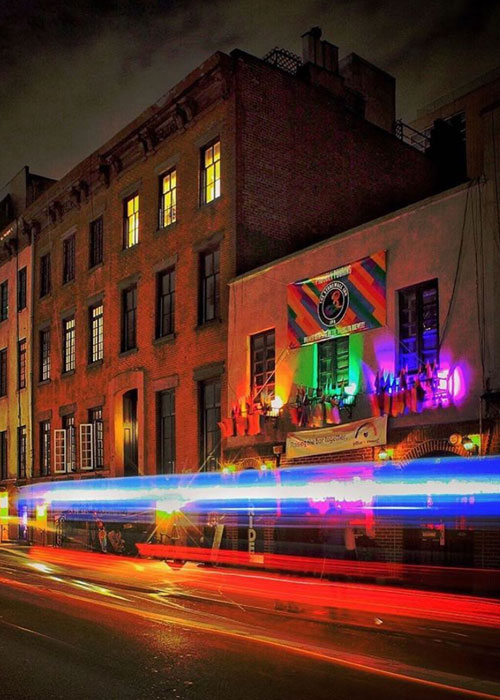
One man’s trash is another’s treasured bar history
When it comes to gay and lesbian bar archiving, another more emotionally fraught barrier looms: The people who own the materials that would help them paint a fuller picture of America’s LGBTQ+ nightlife landscape of yore aren’t always forthcoming with them. Sometimes, this is due to the simple reality that closing a bar sucks. “People don’t keep the ledgers from failed businesses,” says Mattson, who has interviewed around 100 gay and lesbian bar managers and owners. It’s a turning point no small-business owner wants to come to terms with, let alone make public. “You get very little in terms of documentation of what the inside [operation] of the bars was like,” echoes Hilderbrand.
Even when bars are still open, their owners are not always amenable to the idea of forking over sensitive documents. “In archiving our history, one of the biggest challenges is the bar owners,” says Perez, who in addition to his touring and archival work, has authored a half-dozen books about New Orleans, including a history about the city’s — some say the country’s — oldest gay bar, Cafe Lafitte in Exile. “If a bar is still open and active, they don’t necessarily want all their records [archived and published]. … That’s not something they’re going to willingly give up.” In his work with the LGBT+ Archives Project of Louisiana, Perez has contemplated the strategy of asking owners at New Orleans’ still-open gay bars to sign letters of intent to earmark their files for archiving if or when they close. If a gay or lesbian bar owner “backs out through the exit” (to use Mattson’s analogy) without such an agreement in place, those materials may just wind up in the trash.
Complicating matters, patrons and owners alike may not consider things like invoices and ephemera to be worth saving, says Macias. “Someone who ran a [gay or lesbian] bar for like five or 10 years in little El Monte, Calif., 30 miles east of downtown L.A., isn’t gonna know [that archives would want their materials.] They’re selling all of their stuff off to try to make a little profit at the end of their business closing.” Value is in the eye of the beholder, after all, and all too often the holders of coveted pieces of gay and lesbian bar history don’t see them as such. “Our communities — the queer of color, the queer Latina, the Latina lesbian, gay, Latino [communities] in East L.A. and East of East … oftentimes don’t even understand our value in the present,” she continues. “They don’t imagine that they’re holding [historical] ‘prizes,’ these rich documents that can fill the gaps historically.”
“Sometimes people don’t realize what needs to be preserved,” agrees Perez. “Part of my job is convincing people: ‘Hey, that poster of a drag show from 30 years ago, you may not think is important, but it is. ’” (Another part of his job — and all archivists’ jobs, really — is finding funds to actually preserve these items once obtained. “We just need money to do what we do,” says Perez.)
Dr. Cartier has come across a related disconnect in her own work. “So many of the people that I interviewed were surprised that I thought that their stories about bar culture were important, because bars have been denigrated [in this country] as a lower-class meeting place,” she says, adding that holding dual citizenship in both the U.S. and Ireland has influenced her perspective on the vital community nature of the bar as an institution. To her, a gay or lesbian bar is “a church, a community center, … a lifeline to the creation of identity.” Ephemera and memories about the experiences and relationships formed there are “so precious,” she continues, but because pub culture doesn’t feature as heavily in broader American drinking culture, “we tend not to see the bar as what it is for gay people.”
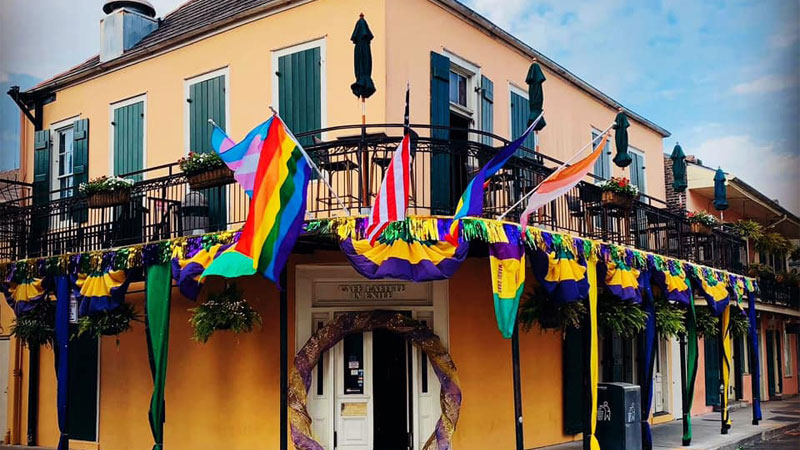
Looking ahead
These days, Sukie de la Croix has traded Chicago’s severe winters for the warm embrace of Palm Springs, Calif. (“Where homosexuals go to die,” as he puts it.) He quit drinking in 2008, but his professional connection to the gay bars and their history remains intact: He’s currently working on an encyclopedia of Chicago gay bars with a co-author, Chicago LGBTQ+ press veteran Rick Karlin. It’ll be his last book. “I just want to document what’s never been documented so that in 100 years, when there are no gay bars around and people can’t even grasp the concept of a gay bar, at least there’s a book that tells them what happened — and all the fun things that happened in bars.”
These include ass-painting and banana-swallowing contests, both of which he recently discovered took place at Chicago bars of yore. “God, I wish I’d been there,” he says, wistfully.
Will there be more ass-painting and banana-swallowing in the future? Hard to say. Macias, at UCLA, wonders if the post-pandemic surge might bring about renewed interest in those gay and lesbian bars that remain for drinkers who spent the last year cooped up and reading about their demise. Art about those joints and beloved bygone businesses (of which there is a growing catalog) could fuel that turn. “Some of these bars are now getting referenced in poetry, in films, as these phantoms of the past, and I think there’s increasing interest in how to revive or take the actual spaces where they existed,” she says. “Maybe not revive them as a bar, but … to keep something intact in relation to them.”
As for those gay and lesbian bars that are still in business, and reopening after the pandemic, the hope is that storytelling about their past will keep them intact in the future. “We just want to make sure we document and honor spaces that are also changing, and really accompany them through these changes and let people know that they’re still there and still available,” says the Lesbian Bar Project’s Street. In early June, LBP released a more in-depth documentary and reopened its donation page to allow drinkers across the country to support America’s remaining lesbian bars — because if there’s one thing that holds true across archival work and bar ownership, it’s that funds are always tight, and appreciated.

